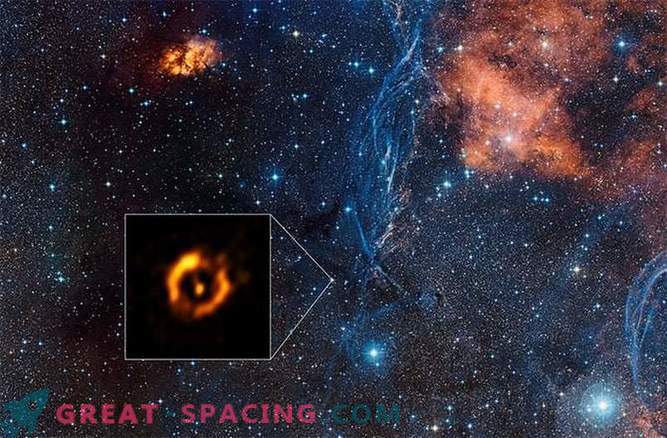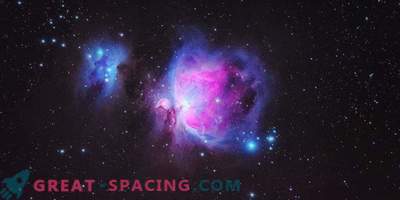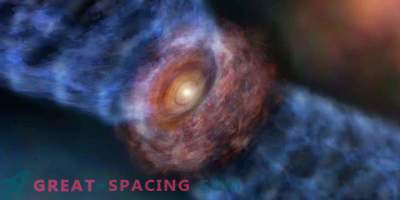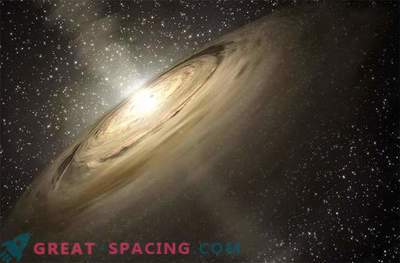
It is a well-known astronomical fact that young stars often pass through adolescence, forming dusty formations of planetary rings, called protoplanetary disks. But new observations show that even the old stars, living out their last years in fierce agony, have strikingly similar features. This discovery intrigued astronomers, but also baffled: did dying stars also produce planets?
Dusty star death
The observations were made at the European Southern Observatory with the Very Large Telescope Interferometer (VLTI), located in the Atacama Desert in Chile. The pictures show: when the life of a star comes to an end, it produces the strongest dust disc ever seen that surrounds a star.
When hydrogen stars run out in stars like our Sun, they begin to drain more and more heavy elements in their core. This leads to the fact that the old star becomes very unstable, swells in size, turns into a red giant and spews powerful stellar winds. These stellar winds culminate in the so-called “planetary nebula” surrounding the stellar giant. In addition, a dusty ring may form, which awakened the interest of astrophysicists.
Until now, it was quite difficult to find the dusty disks surrounding the dying stars. Of course, we found a lot of young objects with protoplanetary disks. But it would be nice to compare them with older colleagues. Using the VLTI, astronomers have discovered one of these disks surrounding the old red giant, located 4,000 light-years from Earth. The star, which is one of the binary pairs, is called IRAS 08544-4431. Her smaller binary partner revolves around a large star very closely within the main disk.
“By combining the light of several VLTI telescopes, we got a picture of stunning clarity, equivalent to what a telescope with a diameter of 150 meters would see,” said astronomer Jacques Klusk of Exeter University (UK) in a press release from the European Southern Observatory (EYU). “The resolution is so high that it looks like if we could determine the shape and size of one euro coin visible from a distance of two thousand kilometers.”
Interferometry uses several separate telescopes located far from each other. The distance between them creates a “virtual” telescope, which is larger than the sum of its parts. In the case of the VLTI, it consists of four separate telescopes, each of which is with a main mirror more than 8 meters wide. When used together, these four telescopes (plus four auxiliary telescopes) are combined into one to simulate an optical telescope having a width of 150 meters. When it comes to telescopes, the more, the better, which gives the VLTI Observatory an extremely high performance, capable of capturing the smallest details in a dust disk around IRAS 08544-4431.
Dusty birth of planets?
Using a new technique that blocks the bright light of the central star, the researchers were able to see the inner edge of the disk surrounding the large star, as predicted by theoretical models. The inner edges of the stellar disks will always be free from dust, since intense heating of the star will evaporate the innermost material. As a bonus, the VLTI also discovered a smaller dust ring around a second, lesser star in a binary system. “We were also surprised to find a weaker light that probably came from a small accretion disk around a companion star,” added Michelle Nillen, lead author of an article published in Astronomy & Astrophysics (Astronomy and Astrophysics). - We knew that the star is double, but we did not expect to see the satellite directly. This is due to a jump in the performance provided by the now-new PIONIER detector. Now we can see the inner regions of this distant system. ”
The observation suggested that these old stellar disks, like the protoplanetary disks surrounding children's stars, may lead to the emergence of a second generation of planetary formation, but further observations are necessary.
“Our observations and modeling open up a new window for studying the physics of these disks, as well as stellar evolution in binary stars. For the first time, the complex interactions between close binary systems and their dusty environment can now be studied in space and time, ”said co-author Hans Van Winkel.











































